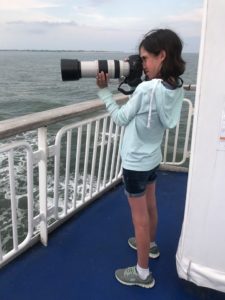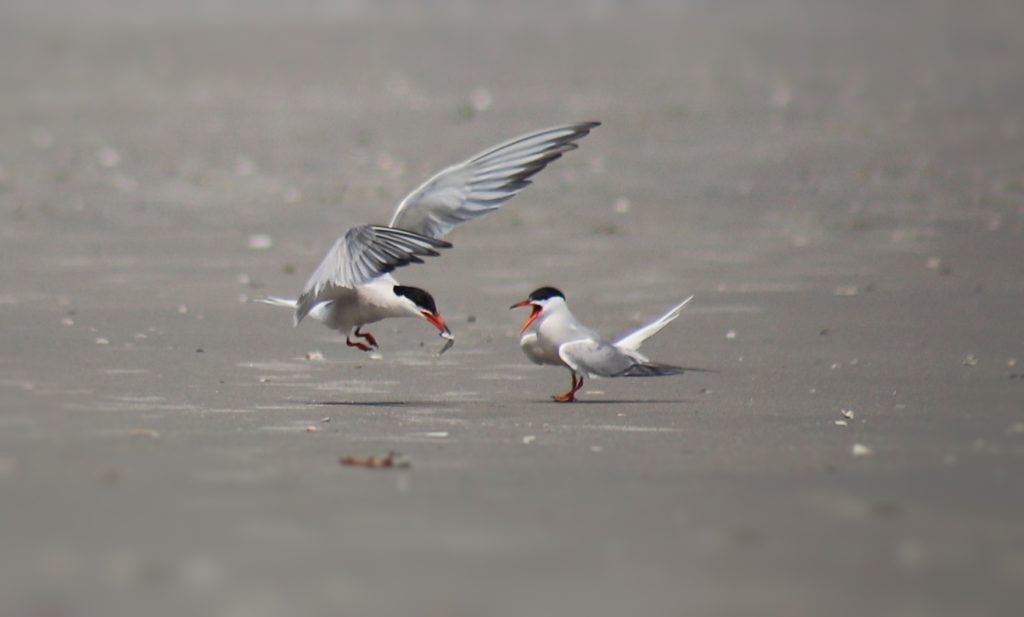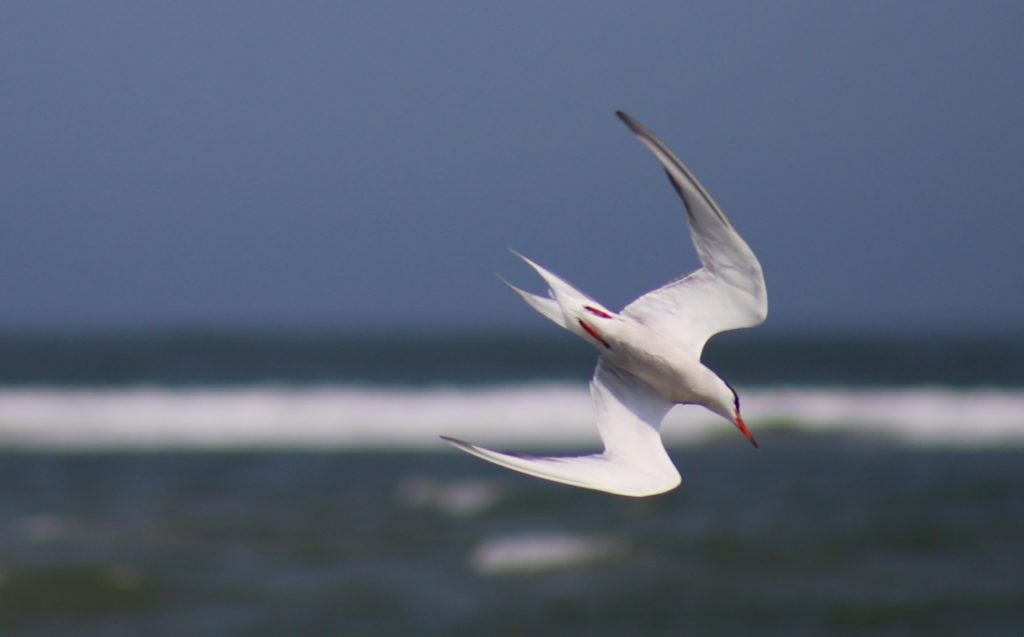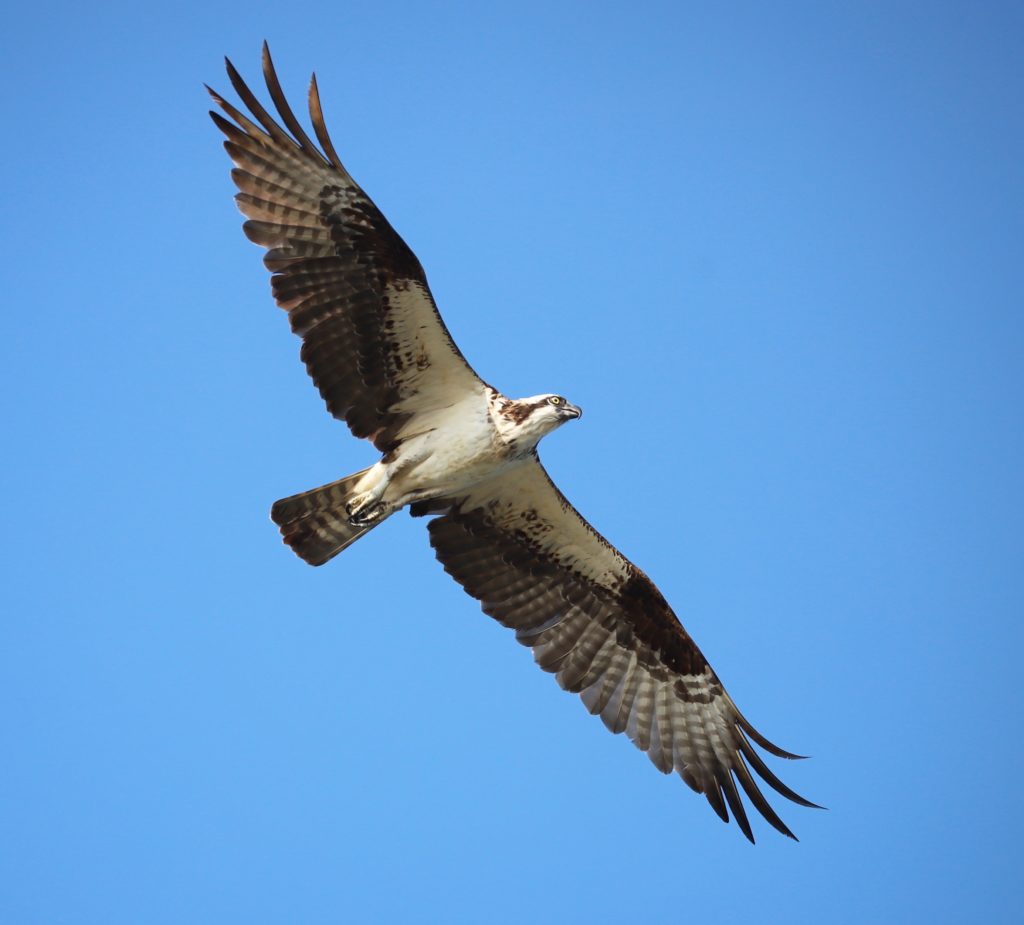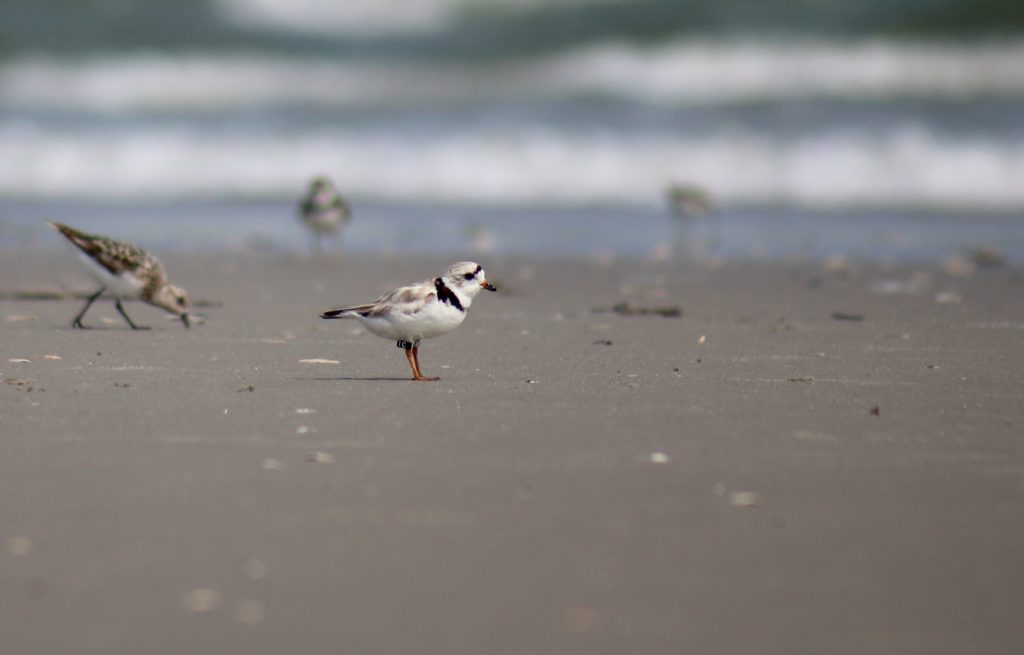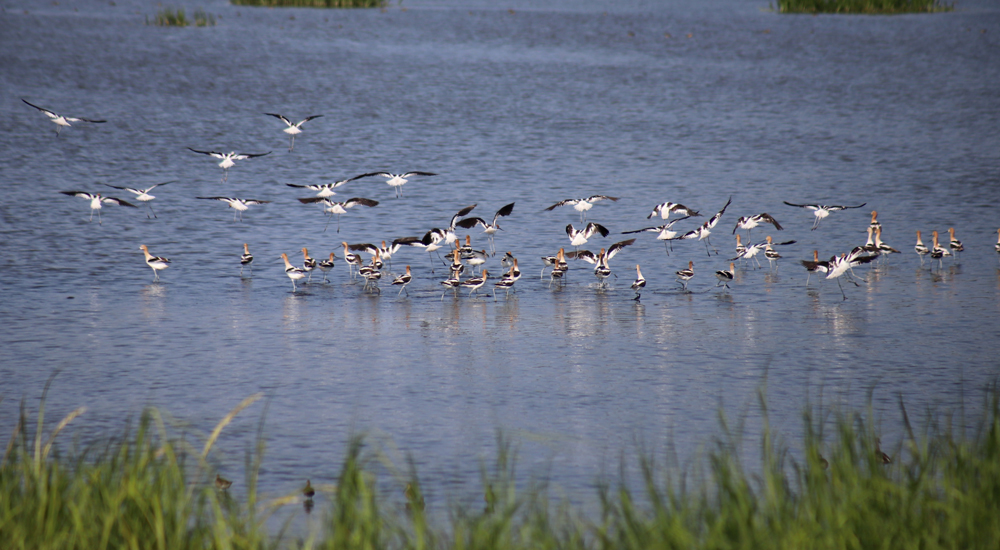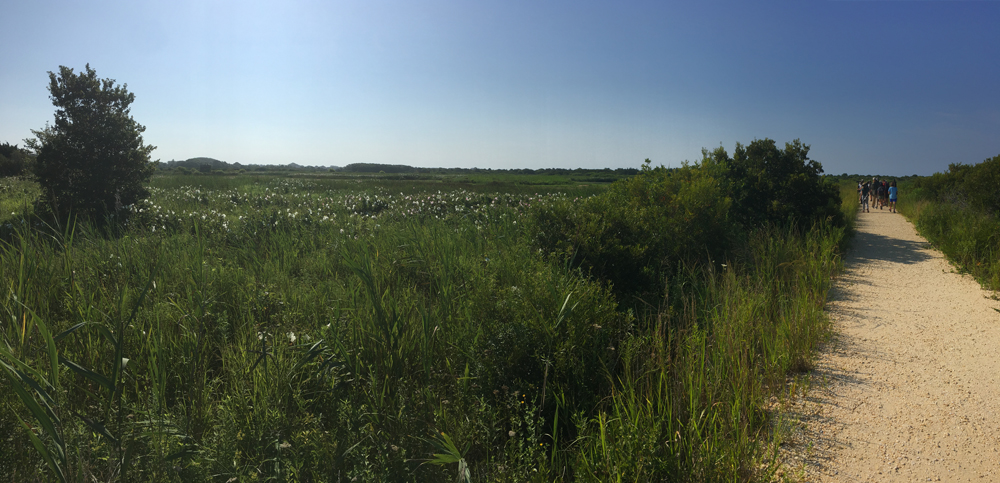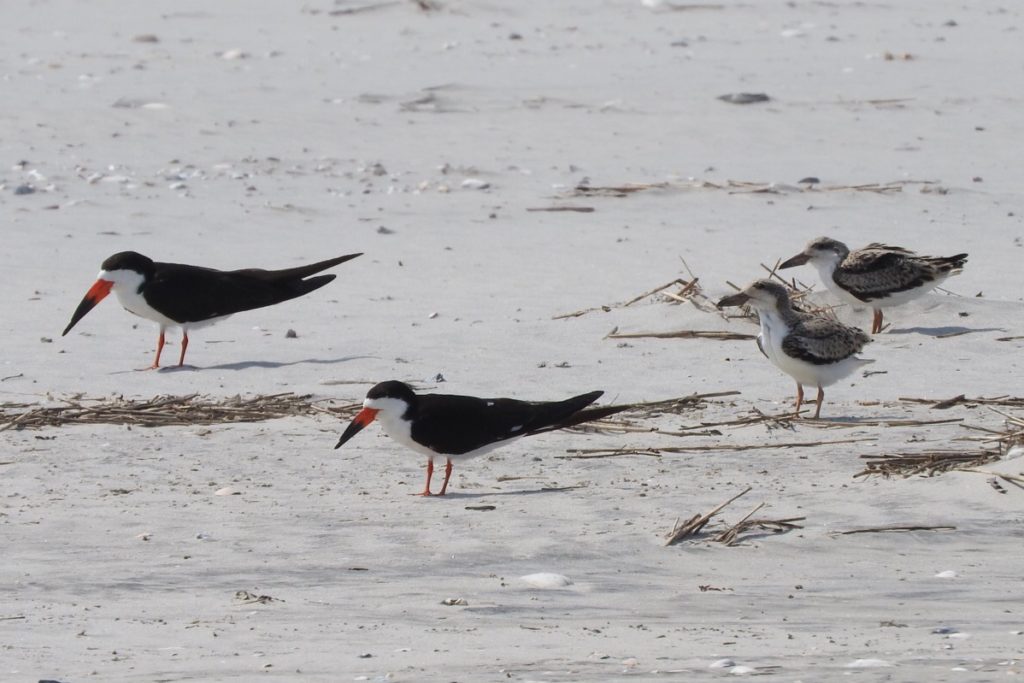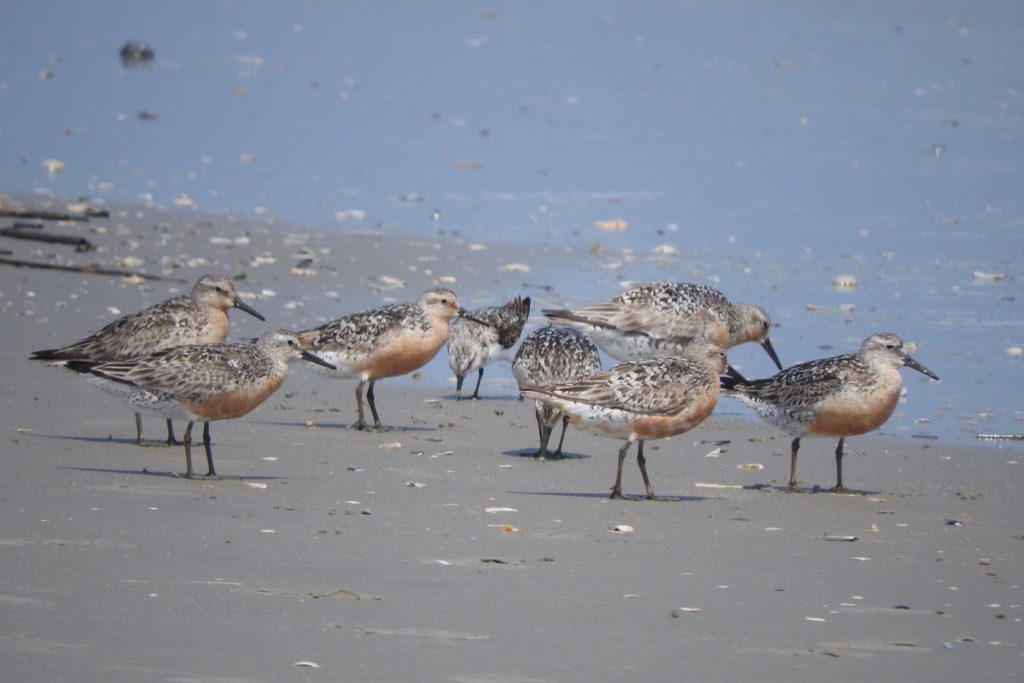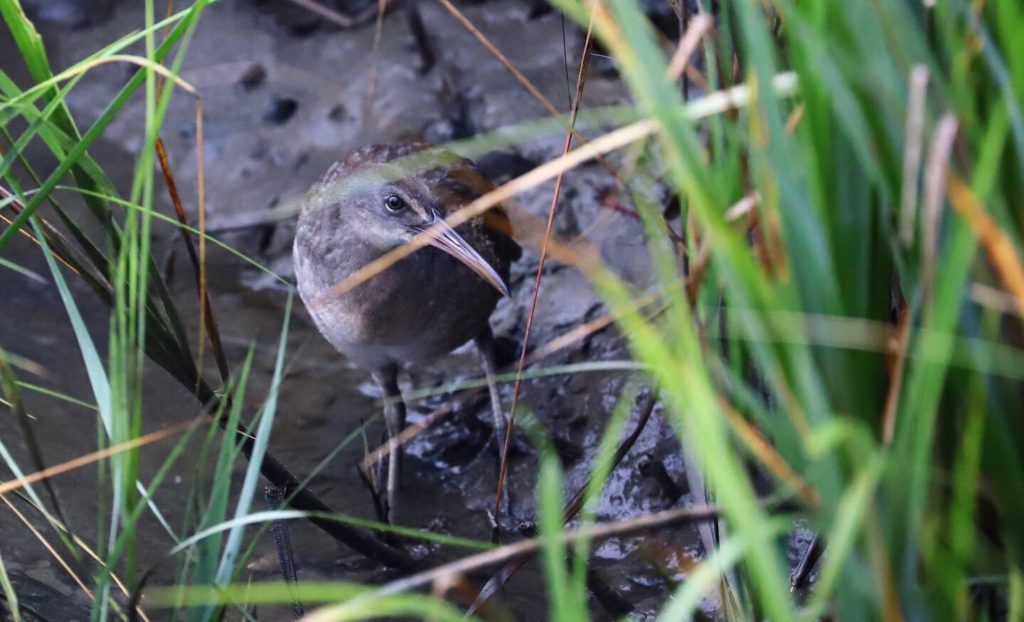Young Birders Josh and Chelsea Mosteller Share Their Story
by Josh and Chelsea Mosteller
Editor’s note: The Columbia Audubon Society helped to sponsor a recent trip to a birding camp in Delaware for two enthusiastic young birders, Josh Mosteller, 18, and Chelsea Mosteller, 14. Here, in an article by each, they share the story of how they became interested in birding and give an account of the camp, illustrated by a selection of their many great photos from the camp. We look forward to their continued involvement in the birding community!
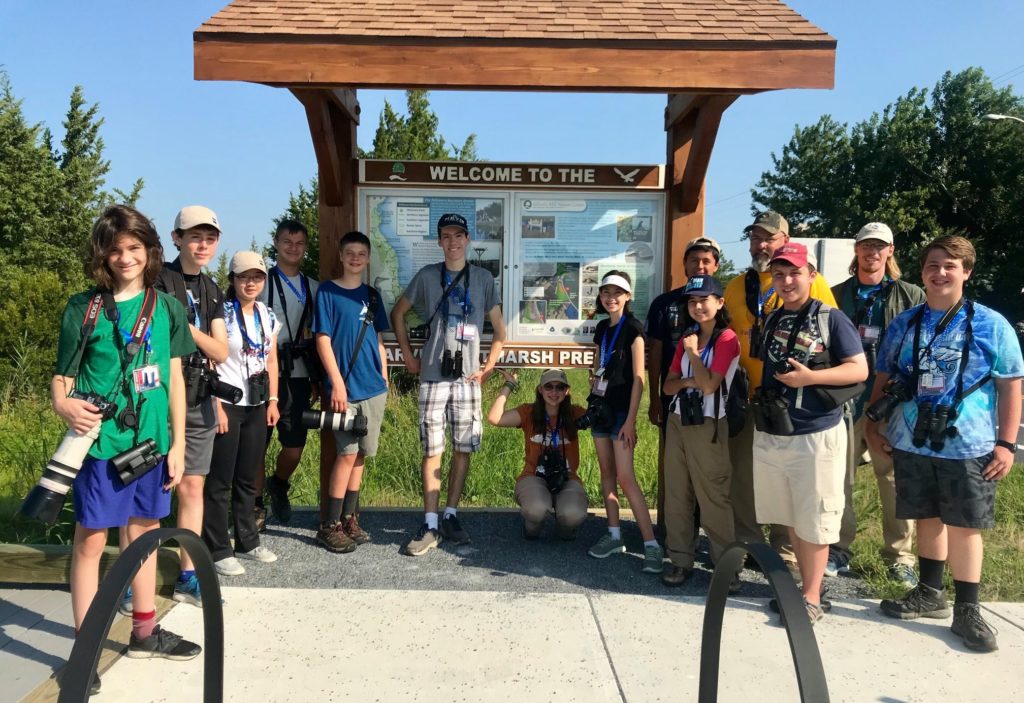
Camp Avocet group photo. Josh (in a gray shirt) and Chelsea (in a black shirt) are standing in front of the sign board in the center of the photo.
Birding and my story
by Chelsea Mosteller
As a young kid I always knew I wanted to do something involving nature and art when I was older. At the time, those things seemed like completely different passions to me. Looking back at it now, I realize my dreams were not as far apart as I once believed. By the age of about ten I was introduced to photography by my dad. I picked it up quickly, and by the age of thirteen or fourteen, I got serious about it. Now it’s my hope to follow these passions into my future career.
Let’s go back in time to how I got into birding. I have always been interested in the beauty of nature. I remember looking at every cool leaf or mushroom as I still do today. When I was about six or so, my parents bought a huge book of amazing birds from all over the world. We loved that book! My sister and I mostly loved looking at the nice pictures and artwork, but my brother was doing something more. He started memorizing the birds and looking at the range maps. Next thing I knew he was pointing out birds through the window. As his little sister I wanted to know what all the excitement was about. With some practice, I learned some of the birds too. After this passion had started, my mom got my brother some binoculars that he still uses to this day. Several years went by and birding was only a slight hobby of mine, but each year I gained more knowledge. Over a year ago, things really started picking up. Josh and I noticed lots of beautiful birds migrating through our yard during the spring of 2018. We saw Rose-breasted Grosbeaks, Magnolia Warblers and more, but most exciting was a beautiful “lifer” that graced our back yard. We spent a long time trying to photograph and identify the beautiful bird until finally I got a good enough shot for identification. When we did, there was no doubt that it was a lovely Blackburnian Warbler.
After that, I started paying more attention to birds and birders. We joined the CAS Facebook page and saw that the Columbia Audubon picnic was coming up. We had never been birding with other people before, so this was a big step. As we were looking forward to the event, we couldn’t help but wonder if we would possibly meet the one person behind the majority of the eBird checklists we read. And sure enough, we did! We saw our local birder celebrity, Edge Wade. As soon as she met us, she insisted on paying our way to the Audubon Society of Missouri meeting in fall of last year.
At that meeting, I learned what it was like to do serious birding. We did flushing, used scopes, and were introduced to the bird world I never knew existed. After that I started joining more groups and bird walks. Until that time I never really had a good friend who shared my insane interest in birds. I finally found my people!
Since then, I have been trying my best to put myself out there, and get to know more birders, photographers, artists, and nature lovers. That’s when I found myself signing up for a birding camp in a state I’ve never even visited. Never did I think that I would I would fly to Delaware for a week of birding adventures, room with a stranger, and leave my parents behind. Due in part to the generosity of the Columbia Audubon Society, we were able to enjoy this incredible opportunity. Camp Avocet was amazing! I loved getting to meet people my age who share a love for birding. We saw lots of lifers and got many great photos. It was so nice to say something like “Prothonotary Warbler” without any confusion as to what I was talking about.
During the last night of camp we had an event called “Avocet Night” where campers could voluntarily give a short presentation about what they do with their passion for birds, such as photography or field sketches. This was my opportunity to share something special I have created in the recent months. A few of you may already know of my latest project, BirdMatch, a memory matching game that I designed and illustrated. I drew 24 different species of some of Missouri’s most popular birds. I originally had thirty decks of cards printed to sell and needed to sell twenty decks to cover the printing cost. I was worried that I wouldn’t sell enough to break even, but I was pleasantly surprised. I ended up selling them all in less than a month! So next we decided to order 100 more. So far I’ve sold more than 70 decks of BirdMatch to at least twelve states, including Hawaii! The experience has led me to reach out to more birders and nature lovers, and I am just so thankful for all those who have supported me along the way and for the many opportunities I have been given. Birding will always be a huge part of my life, and I can’t wait for what’s next.
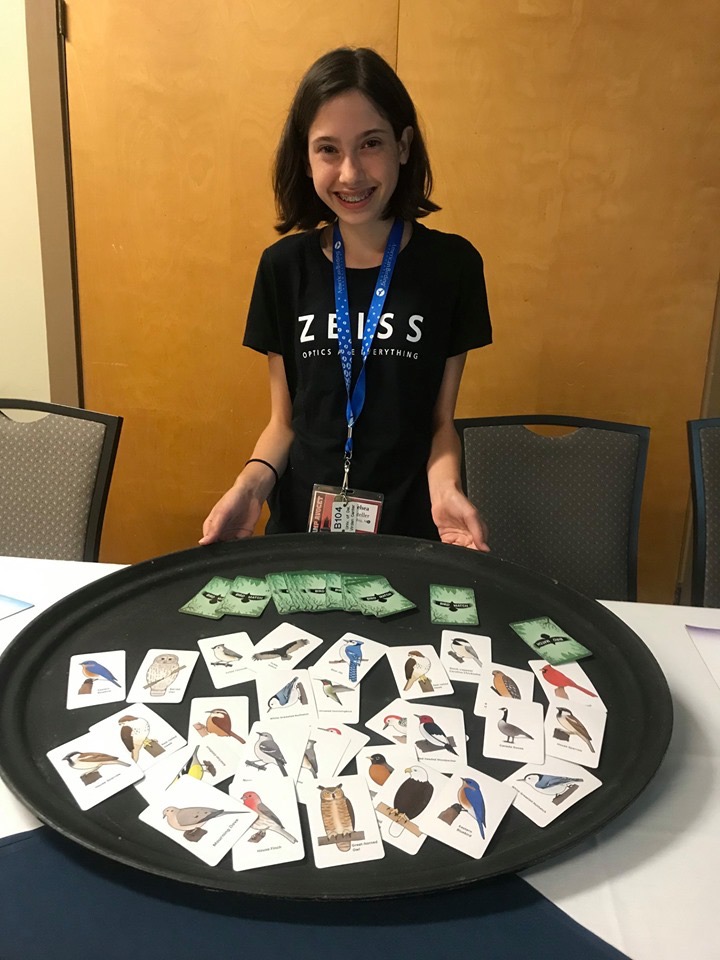
At Camp Avocet, Chelsea had an opportunity to present her previously designed BirdMatch game, which she sells on Etsy.
A Week at One of America’s “Birding Camps” for Teens
by Josh Mosteller
This summer, my sister Chelsea and I spent a week at a summer camp in Delaware—even though we live all the way in Missouri. So why did we decide to stay with some random teens halfway across the country? Because this was not a typical summer camp.
One of the many things that the American Birding Association does with its budget is organize annual “Young Birder Camps” every summer. The ABA hosts participants aged 13-18 for a week in the Rocky Mountains at “Camp Colorado” as well as in Delaware at “Camp Avocet”, where Chelsea and I toured the best birding places in the Mid-Atlantic with ten other teenage bird nerds and three experienced instructors determined to maximize our week in the region.
Not an outdoor camping trip, the camp is based at a retreat center in the town of Lewes (pronounced like Lewis/Louis) in the south side of the state. Between July 26th and August 3rd, the group visited three National Wildlife Refuges, birded all three counties in the tiny state, and also travelled to Virginia and New Jersey. We met some other “fanatics” and learned about watching, illustrating, and identifying birds. It was an unforgettable trip.
Our first birding destination was an evening visit to a sandy peninsula called “The Point” at Cape Henlopen State Park. The Point itself was officially off-limits to protect nesting habitat for threatened species, so we set up spotting scopes behind the barrier to watch distant shorebirds on the untouched beach in the remaining daylight. We had a brief glimpse of a Least Tern, and I finally found the Piping Plover that the others had been watching before it got too dark. Fortunately, we were able to get much better looks at these new species later in the week.
Our first full day, mainly spent in northernmost New Castle County, was a good time to get to know the other campers. We ate lunch and watched an art presentation at the ABA headquarters in Delaware City, pulled over to observe Marsh Wrens and Clapper Rails from a pedestrian-friendly road bridge on the way back to camp, and ended the day with a search for owls at dusk back in Sussex County.
The next day we were overwhelmed with shorebirds and waders at Bombay Hook National Wildlife Refuge. Semipalmated Sandpipers, Short-billed Dowitchers, Snowy Egrets, and gorgeous American Avocets numbered in the hundreds in the refuge’s wetlands. It was unlike any shorebird experience we had ever had before. We then explored Big Stone Beach Road, where we saw our first Seaside Sparrow and were teased by a Virginia Rail.
Monday gave us good looks at Saltmarsh Sparrows near Slaughter Beach and a Dickcissel well east of its typical range at Prime Hook National Wildlife Refuge. On Tuesday, we made the two-hour journey to Chincoteague NWR in Virginia. The refuge is located on Assateague Island, famous for the many feral horses that roam across it. The tide may have minimized the birding potential, but it was a scenic place in a new state for me. We did eventually see a distant Sandwich Tern before we left—the only place where we had a good chance to see one.
The next destination was Cape May—the world-renowned place in New Jersey for viewing “fall” migration along the East Coast. Instead of waiting later for the first ferry ride from Lewes, we drove a few hours around Delaware Bay and rode the ferry on the way back to Delaware. First, we took a walk around the scenic Cape May Meadows and Cape May Wetlands, where there was a colony of Least Terns in the air and a small observation deck occupied by several Common and Forster’s Terns, giving us the opportunity to study the two similar species up close. After lunch, we headed further up the coast to Stone Harbor Point. That was a fantastic place for beach birding—we got close looks at Lesser Black-backed Gulls, a couple of Piping Plovers, a flock of Red Knots, and a nesting colony of hundreds of Black Skimmers with their young.
Our last full day was comparatively less comprehensive. In the morning, we visited The Point again for a “Big Green Hour”, a competition in which three teams of four campers—each accompanied by one instructor—tried to find the most species in the same 60-minute period. In the afternoon, we finally took a trip outdoors that wasn’t focused on birding—just a casual time for recreation on the beach—although it was officially cut short by the lifeguards who evacuated the area due to thunder heard from across the bay. Back at the camp later that afternoon, I walked with a couple of other guys to a little road bridge with a sidewalk over the marsh adjacent to the retreat center property before the storms reached our corner of the state.
On our last morning of camp, I managed to get up at the crack of dawn to revisit a spot where a few of us had spotted over a dozen Clapper Rail chicks the previous night. After enticing others to join us, we saw a few juvenile Clapper Rails once again. Although the chicks were out of view, we were treated by one adult that was by far the closest and most cooperative rail we had seen that week. The final bird highlight of Camp Avocet 2019 was an enormous flock of White Ibises flying above just before we left. Our count of the species had already exceeded 100 when over 200 more passed overhead at once; the total count was the all-time highest count of White Ibises on eBird for the entire state of Delaware.
Our “life list” of bird species shot up well past the 300 mark during this special week, as we added around a dozen “lifers”. There were actually a few would-be lifers noticed only by others in the group which Chelsea and I missed. Black-bellied Plover, a Black-billed Cuckoo, and Parasitic Jaeger were identified by others in our group. There was simply so much to see.
This outstanding opportunity was made affordable in large part due to very generous sponsorship by the Columbia Audubon Society. It has only been about a year since we were first introduced to the birding community, and we are constantly met with encouragement, inspiration, and a willingness to support our passion. It is an honor to share what I have taken from this experience in return. Thank you all.
Text and photos © Josh and Chelsea Mosteller 2019

